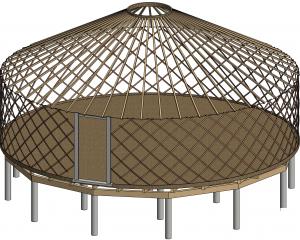The film industry should be given special access to Mt Aspiring National Park for filming, the Department of Conservation has been told.
Doc heard from 10 submitters on the draft Mt Aspiring National Park Management Plan Review in the second day of hearings in Queenstown yesterday.
The review is to determine how the country's third-largest national park, which stretches from Otago to South Westland, will be managed until 2020.
Film Otago-Southland manager Kevin Jennings said while fixed and restricted landing sites were acceptable for other commercial users, Doc should reserve some degree of flexibility in exceptional circumstances for the film industry, especially for one-off film landings in remote and back country zones.
"It is clear that the film industry is different from other park users and subjecting it to the same conditions is neither fair nor responsible," he said.
He said the draft plan had a "massive reduction" in the proposed number of landings and would "significantly limit" filming activities in the park.
"We feel the draft was written with bias . . . The number [of landings] don't allow for sporadic growth," he said.
He suggested the film industry set up a fund to help with conservation projects in the park.
He opposed the incorporation of the Lower Dart into the park because it could result in "significant loss" of access.
He said the submission process was flawed because members of the hearing panel were also responsible for writing the plan.
"We feel they will struggle to be objective to suggested changes to the document that they have been instrumental in creating. There is no new perspective," he said.
He said the New Zealand film industry would be put in jeopardy if his submissions were not accepted.
The hearing panel was Doc Wakatipu area manager Greg Lind, Chas Tanner and Garry Nixon from the Otago Conservation Board and Doc senior planner Bronwyn Hunt.
Mr Lind said he had "absolute confidence" in the process.
The panel members would listen to submissions and report back to the board for the draft to be amended taking the submissions into account.
Planner David Willetts, who gave submission on behalf of Film NZ, said the draft plan was inflexible and put more limits on where crews could land and film.
He called for the plan to set out better access to remote areas for the film industry. In return the industry would agree not to fly over certain areas and could help fund the national park through location fees, he said.
The film industry had huge economic benefits for the region but a small environmental footprint, he said.
The hearings continue in Wanaka today.
The draft plan attracted 436 submissions from hunters, recreational and commercial users, residents and environmental groups.
Other submissions at the hearing:
• Milford Dart director Michael Sleigh said provision for the proposed Milford Dart tunnel should be included in the plan. He said the 10km tunnel would cut the drive time to Milford Sound by 55%, create 300 jobs and have no significant adverse effects.
• Queenstown businessman Henry van Asch wanted more access for heli-skiing. He said he was working on developing a heli-skiing product in the Main Divide that would attract high end tourists. He wanted to work with Doc to ensure access to more remote terrain. He said the activity would have "virtually no impact" on the physical environment and would not diminish the experience of other users. He suggested a web-based system for monitoring other users, so heli-skiers could avoid them.
• Mt Earnslaw Station owner Geoffrey Thompson opposed the proposal to add conservation land adjoining his property into the national park. He said it would be more difficult for him to get consents on land adjoining a park.
• Southern Lakes Deerstalkers Society member Alan Mackie opposed heli-hunting and live capture of animals. He said heli-hunting was unethical, contravened national park policy and deterred recreational hunters.











